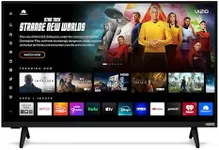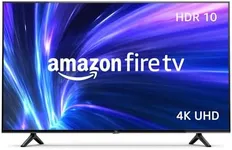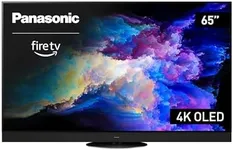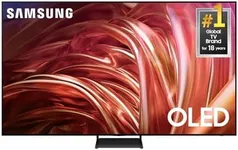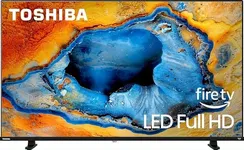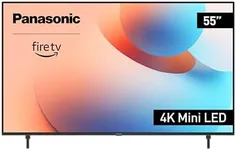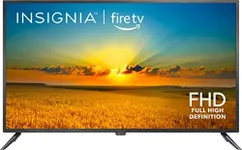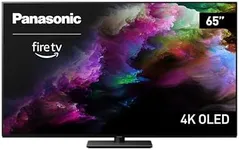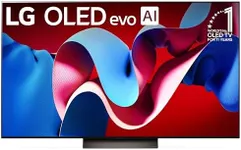We Use CookiesWe use cookies to enhance the security, performance,
functionality and for analytical and promotional activities. By continuing to browse this site you
are agreeing to our privacy policy
10 Best Smart TVs 2025 in the United States
From leading brands and best sellers available on the web.How do we rank products for you?
Our technology thoroughly searches through the online shopping world, reviewing hundreds of sites. We then process and analyze this information, updating in real-time to bring you the latest top-rated products. This way, you always get the best and most current options available.

Most Popular Categories Right Now
FAQ
Buying Guide for the Best Smart TVs
Choosing the right smart TV can significantly enhance your entertainment experience. With so many options available, it's important to understand the key specifications that will impact your viewing pleasure. By focusing on these specs, you can find a TV that meets your needs and preferences.Screen SizeScreen size refers to the diagonal measurement of the TV screen, usually in inches. This spec is important because it determines how immersive your viewing experience will be. Smaller screens (32-43 inches) are suitable for bedrooms or kitchens, medium screens (50-65 inches) are great for living rooms, and larger screens (70 inches and above) are ideal for home theaters. Consider the size of your room and the distance from which you'll be watching to choose the right screen size for you.
ResolutionResolution indicates the number of pixels that make up the picture on the screen, with higher resolutions providing sharper and more detailed images. Common resolutions include Full HD (1080p), 4K (2160p), and 8K (4320p). Full HD is suitable for smaller screens and casual viewing, 4K is ideal for larger screens and a more immersive experience, and 8K is for those who want the latest technology and the highest level of detail. Consider what type of content you'll be watching and how important image clarity is to you.
Smart TV PlatformThe smart TV platform is the operating system that runs the TV and provides access to apps and streaming services. Popular platforms include Android TV, Roku TV, and webOS. This spec is important because it affects the user interface and the availability of apps. Android TV offers a wide range of apps and Google Assistant integration, Roku TV is known for its simplicity and extensive app library, and webOS is praised for its user-friendly interface. Choose a platform that aligns with your preferred apps and ease of use.
HDR (High Dynamic Range)HDR enhances the contrast and color range of the TV, making images look more realistic and vibrant. There are different HDR formats, such as HDR10, Dolby Vision, and HLG. HDR10 is the most common and provides a good improvement in picture quality, Dolby Vision offers dynamic metadata for even better performance, and HLG is used for live broadcasts. If you enjoy watching movies and shows with stunning visuals, look for a TV with HDR support.
Refresh RateRefresh rate is the number of times the TV updates the image on the screen per second, measured in Hertz (Hz). Common refresh rates are 60Hz, 120Hz, and 240Hz. A higher refresh rate results in smoother motion, which is important for fast-paced content like sports and action movies. 60Hz is sufficient for most viewing, 120Hz is better for smoother motion, and 240Hz is ideal for the smoothest experience. Consider what type of content you watch most often to determine the right refresh rate for you.
ConnectivityConnectivity refers to the ports and wireless options available on the TV, such as HDMI, USB, and Wi-Fi. This spec is important because it determines how you can connect other devices like gaming consoles, soundbars, and streaming devices. Ensure the TV has enough HDMI ports for your needs, USB ports for media playback, and Wi-Fi for internet connectivity. Think about the devices you plan to connect and choose a TV with the appropriate connectivity options.
Audio QualityAudio quality refers to the sound performance of the TV's built-in speakers. This spec is important because it affects your overall viewing experience. Some TVs come with advanced audio technologies like Dolby Atmos for immersive sound. If audio quality is a priority, look for TVs with good built-in speakers or consider investing in a soundbar or home theater system. Think about how important sound is to your viewing experience and choose accordingly.


